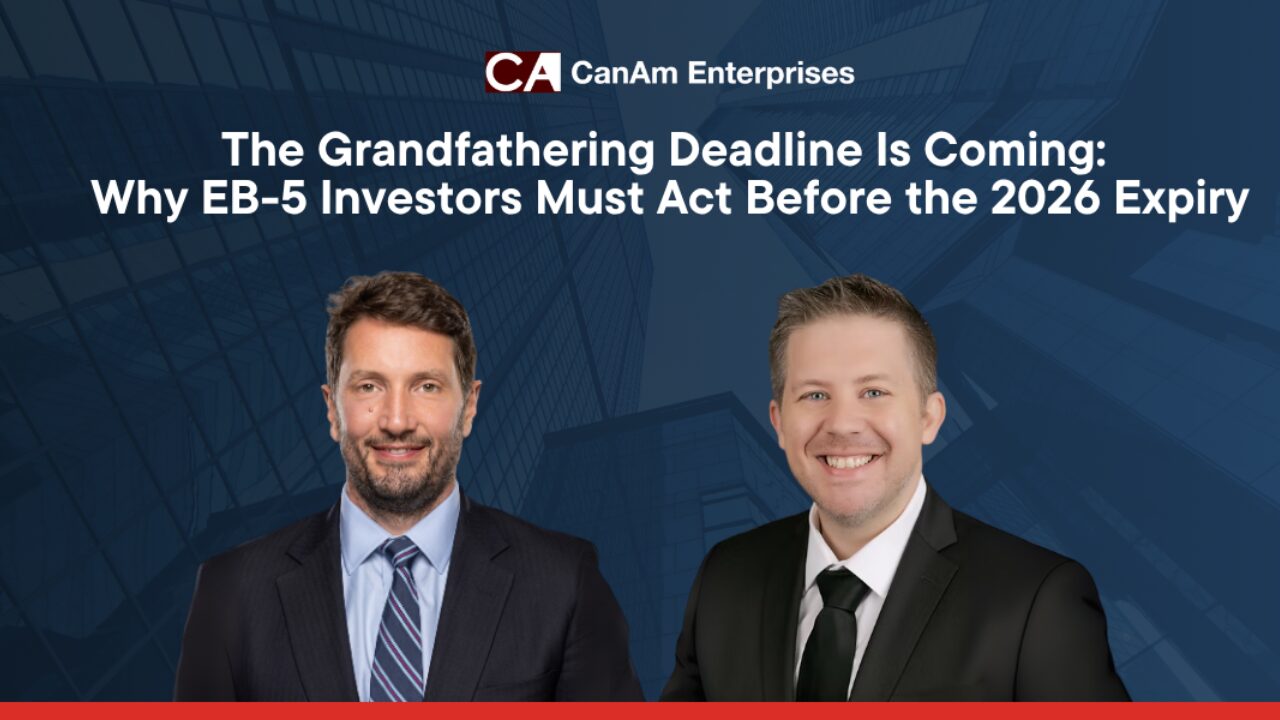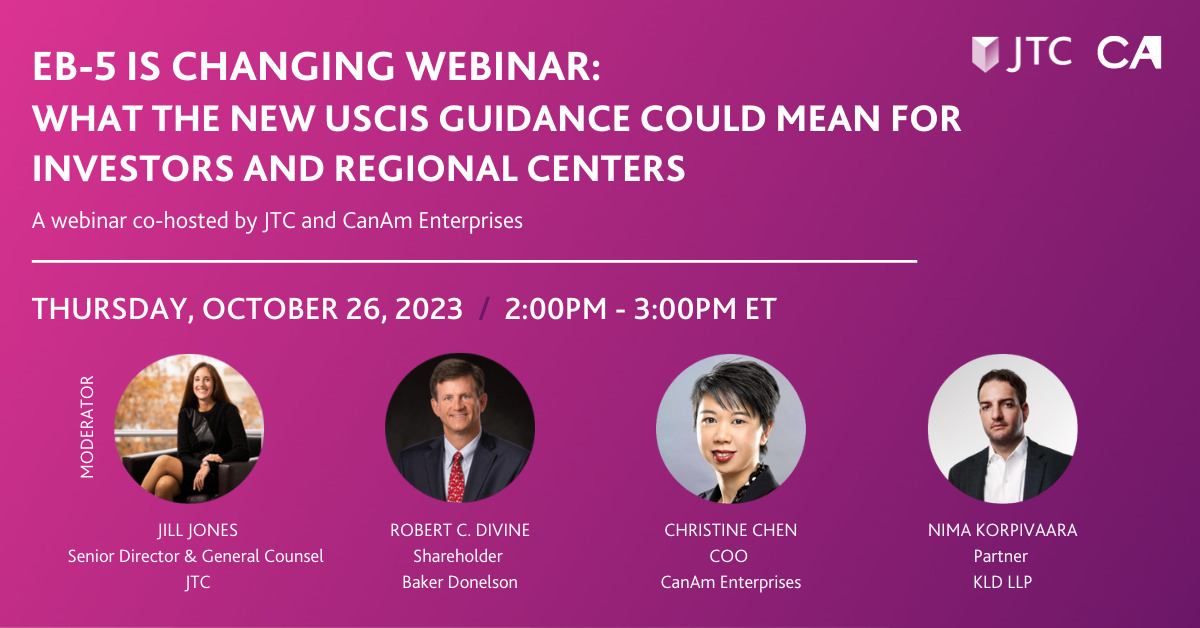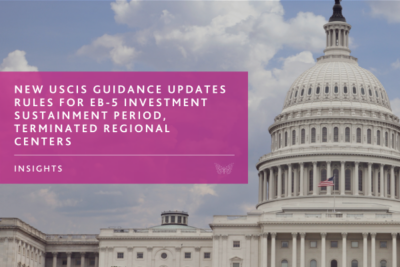The EB-5 Immigrant Investor Program has long served as a bridge between global investors and American economic development. At its core lies a simple, powerful idea: by investing in U.S. projects that create jobs, eligible immigrant investors and their families can earn U.S. residency and a path to a Green Card.
But while the benefits of investment immigration are far-reaching—for investors, communities, and the U.S. economy—the program hinges on one immovable requirement: job creation. Whether in periods of economic growth or uncertainty, every investor’s path to a green card depends on a project’s ability to create at least 10 full-time U.S. jobs per investor. This makes job creation the central metric for EB-5 Program success—and one that must be diligently managed and documented throughout a project’s lifecycle.
In this article, we explore how job creation drives the EB-5 process, how responsible project sponsors ensure compliance even in volatile economic conditions, and why thoughtful, conservative planning is key to long-term success.
Why Job Creation Is the Core of EB-5
The EB-5 Program is unique among U.S. immigration pathways because it explicitly ties immigration benefits to economic development performance. When Congress created the program in 1990, the goal was to direct foreign capital into projects that generate jobs for U.S. workers—particularly in areas most in need of revitalization.
That foundational principle remains unchanged more than 30 years later. Regardless of a project’s size or capital raised, the EB-5 requirements to create 10 jobs per investor remain non-negotiable. And at the end of the process—when investors file their USCIS I-829 petitions to remove conditions on their Green Card—the agency will focus on whether those jobs were created as promised.
For investors, the implications are clear: the success of their EB-5 journey ultimately rests on the strength of the project’s job creation performance. For regional centers and project sponsors, this means job creation must be the top priority, not just a box to check. It is the gateway to permanent residency.
Modeling Jobs: The Bedrock of EB-5 Compliance
EB-5 job modeling is the cornerstone of compliance and begins with thorough economic analysis prepared by third-party economists. These experts use data such as project budgets, construction schedules, and industry multipliers to project the number of jobs that a project is expected to create.
This methodology allows EB-5 capital to support large-scale developments, but its success depends on the use of conservative assumptions and detailed input. Even small changes in cost breakdowns or timelines can affect job totals, which is why CanAm builds a strong foundation through disciplined modeling.
At CanAm Enterprises, we use a conservative approach to determine how many EB-5 investors each project can support. Our goal is to create a job cushion—a surplus of jobs—that exceeds the minimum requirement. This cushion provides vital protection, ensuring each investor’s immigration benefit remains on track, even if the project faces unexpected changes.
The Power of a Job Cushion: Planning for the Unexpected
Even well-executed projects encounter setbacks. Project delays, cost overruns, labor shortages, and regulatory hurdles can all affect timelines and budgets—potentially undermining job creation.
That’s why building a job cushion is essential to EB-5 risk management. By planning for job creation well above the minimum threshold, developers can provide immigration protection even in turbulent times.
At CanAm Enterprises, we typically build a job cushion of 20–30% more jobs than necessary. In several recent offerings—such as our rural broadband or energy projects—the cushion has been even larger.
Take our Wisper Internet project, for example: job modeling supported more than twice the number of investors in the offering. This wasn’t a coincidence—it was the result of rigorous planning, modeling, and CanAm’s long-standing focus on protecting each investor’s green card opportunity.
Job Creation in a Dynamic Economy: Building EB-5 Resiliency
Today’s economy is marked by economic fluctuations, from inflation and rising interest rates to shifting market demand. These changes affect project delivery timelines and financial returns—but the EB-5 job creation requirement never changes.
To address this, CanAm prioritizes EB-5 project stability through careful selection. We invest in infrastructure investments like broadband and energy—sectors that deliver long-term value and are less vulnerable to cyclical downturns.
We also seek out public-private partnerships where government support enhances stability and reduces risk. A prime example is the Long Ridge Energy Project in Ohio. This utility-scale facility featured a defined timeline, fixed budget, and strong public support—all crucial elements for conservative job modeling.
In a volatile environment, these strategies help us meet job creation goals—and support investor success—regardless of macroeconomic trends.
The Indispensable Role of Ongoing Monitoring in EB-5
Complying with EB-5 job creation isn’t a one-time event. To ensure EB-5 compliance through to I-829 approval, job creation must be continuously monitored and updated as the project progresses.
CanAm has implemented real-time tracking systems to ensure that actual performance aligns with projections. We collect and verify project documentation, including capital deployment data and construction updates, then engage economists to refine models as needed.
This process ensures that submissions to USCIS meet all USCIS requirements and reflect the true economic impact of the investment. It also gives our investors greater confidence that their petitions will be approved.
What Happens If an EB-5 Project Falls Short on Job Creation?
Despite best efforts, EB-5 shortfalls can occur. If a project doesn’t create enough jobs to support all investors, job allocation typically follows the order in which petitions were filed. Earlier filers may qualify; later ones could be left out.
That’s why having a job cushion is essential—not just for compliance, but for investor protections.
Fortunately, recent reforms, including the EB-5 Reform and Integrity Act of 2022, have added transparency requirements that strengthen regional center compliance. These include mandatory audits, reporting obligations, and escrow protections. But these reforms don’t replace the core rule: 10 jobs must be created per investor.
Key Considerations for Today’s EB-5 Investors
For investors evaluating opportunities, understanding job creation strategy is vital. Here are five key EB-5 due diligence questions to ask:
- What is the projected job creation, and how many EB-5 investors are included?
A healthy ratio—where job creation far exceeds the minimum—is a good sign of project viability. - Are job creation assumptions conservative and based on real data?
Look for models grounded in verified budgets and practical timelines. - Is the project in a resilient sector like infrastructure or energy?
These industries are more likely to sustain jobs under pressure. - Does the regional center provide updated job tracking throughout the project?
Regular updates show commitment to compliance. - What is the regional center’s track record?
Look at past performance, approvals, and green card success—these are real EB-5 success factors.
Conclusion: Job Creation – The Undeniable Proof Behind the EB-5 Promise
At the end of every EB-5 journey, job creation is what delivers the EB-5 impact—not just for investors, but for the U.S. communities that benefit from new development and employment.
It’s the proof that supports permanent residency. It’s the metric that USCIS uses to evaluate success. And it’s the foundation of investor confidence in the EB-5 Program.
At CanAm, we understand this better than anyone. That’s why we take job creation seriously—modeling it with precision, monitoring it proactively, and protecting it with built-in cushions.
With more than 8,000 families achieving immigration success through CanAm, our commitment to job creation isn’t just a principle. It’s a promise delivered—again and again.
Related Articles:
F-1 vs EB-5: Weighing Your options for A Long-Term Future in the U.S.
2025 EB-5 Visa Trends & Timelines: CanAm’s Investor Roadmap
Navigating Opportunity: What the Current U.S. Economy Means for Immigrant Investors







